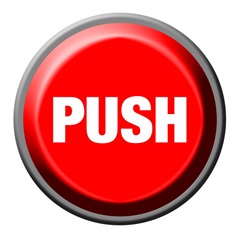 I was recently thinking about my dear old paternal grandmother who was born in 1881 and such a kindly soul. Every time she crosses my mind I cannot but help think about the wondrous things that were invented during her lifetime. My grandmother lived to the ripe old age of 92, quite long lived for her generation and when she was born, the horse and cart still reigned supreme. Her father, my great grandfather, was a farrier by trade so my Gran would have been very familiar with the ways of horses.
I was recently thinking about my dear old paternal grandmother who was born in 1881 and such a kindly soul. Every time she crosses my mind I cannot but help think about the wondrous things that were invented during her lifetime. My grandmother lived to the ripe old age of 92, quite long lived for her generation and when she was born, the horse and cart still reigned supreme. Her father, my great grandfather, was a farrier by trade so my Gran would have been very familiar with the ways of horses.
When Gran was born, apart from the horse and the horse drawn omnibus, the only other viable forms of transport were the railway which was still in a state of infant expansion and barges via the UK’s extensive river and canal system. What certainly did not exist in the UK at that time was the motor car, electric trams, motorised omnibuses or the aeroplane. All of these my Gran would have seen come into being, and even some passing into history like the electric tram. On a more domestic front, electric lighting, the radio, and later television were to later enter her life.
I was born just after the end of World War 2, one of the original baby boomers and I too was trying to think what came into greater prominence during my life. All the things I have already mentioned existed by the time I was born albeit many of them were still a bit basic. Radio and television originally powered by valves has since blossomed into a flourishing international electronics industry.Although considered indispensible today, the electronic computer had already been invent by Alan Turin and Tommy Flowers in secrecy during WW2 for the purpose of decrypting coded messages generated by the German Enigma machine.
Then it occurred to me that although not new, as a young boy the humble push button was considered by most children at that time to be somewhat futuristic and space age. Most electrical equipment like lighting was either operated by a simple switch or a knob that required turning. Push buttons now so common they are almost hidden in plain sight and which do not give rise to a seconds thought, were still comparatively rare just after the war.
My father would occasionally take me to the Science Museum in London and my eyes would always light up in the Children’s Gallery which was situated in the basement with its numerous models and demonstrations that could all be operated at the push of a button. I could hardly wait with childish delight to move onto the next display with yet another button to push. The only problem was the buttons were of the small brass pin type that were both difficult and sometimes painful for small fingers to push.
When I was a junior school, my schoolmates and I would go to a nearby housing estate after classes to play a game of Tag which involved everyone trying to escape a “chaser” and if touched, it was your turn to chase the others. This housing estate had lifts, (elevators), as well as long corridors and stairs. The lifts which could be called at the touch of a button, were still comparatively rare in most working class areas. The presence of the lifts added a whole new dimension to the game. Most of the games came to an end when residents came out to complain about the noise at which time we would move on to the next apartment block on the estate.
So next time you have occasion to press a humble push-button, perhaps you might remember there was a time when it was not so humble at all.
Filed under: The not so humble push-button, Thought Provoking | Tagged: Alan Turin, electric tram, Enigma, horse drawn omnibus, inventions, push button, Science Museum, Tommy Flowers | 1 Comment »






